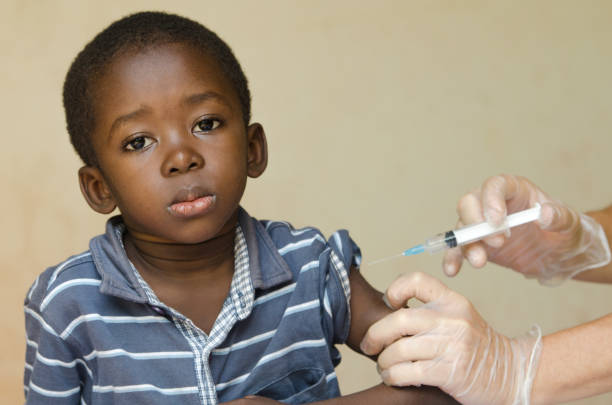Symptoms of Polio
Polio, also known as poliomyelitis, is a viral disease that can affect the nervous system and cause paralysis in severe cases. While polio has been largely eradicated in many parts of the world due to widespread vaccination, it still exists in some regions, making awareness about its symptoms crucial. Understanding the symptoms of polio, how it spreads, and how to prevent it can help protect you and your loved ones from this potentially serious illness.
In this article, we’ll break down the causes, symptoms, and important details about polio in a way that’s easy to understand.
Causes of Polio: Symptoms of Polio
Polio is caused by the poliovirus, which spreads primarily through contact with contaminated water or food, or through direct contact with someone who is infected. The virus enters the body through the mouth, multiplies in the throat and intestines, and can then enter the bloodstream.
There are three strains of poliovirus (types 1, 2, and 3), and while vaccination has helped eliminate most strains, the virus can still be found in countries where immunization rates are low.
How Polio Spreads
Polio is highly contagious. It spreads through contact with the feces of an infected person (fecal-oral route), or less commonly, through droplets when an infected person sneezes or coughs. The virus can survive in the environment for some time, making proper hygiene and sanitation essential to prevent its spread.
Symptoms of Polio
Most people infected with the poliovirus do not show visible symptoms. In fact, about 72 out of every 100 people infected will have no symptoms at all, but they can still spread the virus to others. When symptoms do appear, they can vary depending on the severity of the infection.
1. Non-paralytic Polio Symptoms (Milder form)
In cases of non-paralytic polio, symptoms resemble those of the flu and usually last for a few days to a week. These include:
- Fever: A mild to moderate fever is often one of the first signs of a poliovirus infection.
- Fatigue: A feeling of extreme tiredness or weakness is common.
- Headache: Headaches can range from mild to severe.
- Sore throat: A sore or scratchy throat may be an early symptom.
- Muscle pain: Muscle aches and tenderness can occur throughout the body.
- Nausea and vomiting: Some individuals experience digestive symptoms like nausea, vomiting, or abdominal pain.
- Stiffness: There may be stiffness in the neck and back.
2. Paralytic Polio Symptoms (Severe form)
In more severe cases, paralytic polio occurs, which can lead to partial or complete paralysis. Paralytic polio affects less than 1% of those infected but can have serious, life-changing consequences. The symptoms of paralytic polio include:
- Severe muscle weakness: Sudden weakness in the legs, arms, or both. It usually starts a few days after flu-like symptoms.
- Loss of reflexes: Affected individuals may experience a reduction in or loss of reflexes.
- Floppy limbs: Limbs may become floppy or limp, a condition known as acute flaccid paralysis.
- Difficulty breathing: In cases where the virus affects the muscles of the chest, breathing may become difficult, requiring medical intervention.
- Muscle pain: Intense pain in the muscles due to nerve damage.
Paralysis from polio can affect different parts of the body, including the legs, arms, and even the muscles involved in breathing and swallowing.
Long-Term Effects: Post-Polio Syndrome
Even decades after recovery, some people who had polio may develop post-polio syndrome (PPS). This is a condition where muscle weakness and fatigue reappear or worsen. PPS affects individuals who experience significant muscle damage from polio earlier in life.
When to Seek Medical Help
If you or someone you know is experiencing symptoms that might be related to polio, especially sudden muscle weakness, it’s important to seek medical help immediately. Early detection and medical intervention are essential in managing symptoms and preventing complications.
For professional diagnosis and treatment, you can connect with licensed doctors through the Virtual Doctors App. They offer consultations from the comfort of your home, providing expert advice and treatment plans for a wide range of health issues, including infectious diseases like polio. You can also download the Virtual Doctors Healthplus App on Google Play for easy access to healthcare professionals.
Prevention of Polio: Symptoms of Polio
Vaccination is the most effective way to prevent polio. The polio vaccine is usually administered in childhood, and it protects against all three strains of the poliovirus. In areas where polio still exists, vaccination campaigns play a key role in eradicating the virus. It’s also important to practice good hygiene, such as washing hands regularly and ensuring that drinking water and food are clean.
Polio may be rare in many parts of the world today, but it remains a serious illness in some regions. Knowing the symptoms of polio and how the virus spreads can help protect you and those around you. If you or someone you know shows signs of muscle weakness, fever, or other symptoms, it’s crucial to seek medical advice promptly from licensed healthcare providers through the Virtual Doctors App or download the Virtual Doctors Healthplus App to get connected with medical professionals instantly.
